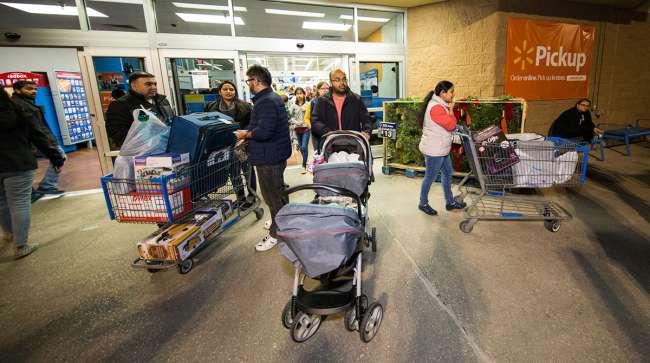Retailers Balance Post-Holiday Returns Between In-Store and 3PL Options

In November and December, online shoppers surfed their favorite websites and sent holiday gifts to the front doors of homes nationwide. In January, the last-mile supply chain shifts in reverse as Americans return the items they don’t like.
The burgeoning reverse logistics industry is one that presents many problems to third-party logistics firms and retailers, and it’s a challenge that’s likely to grow tougher. Adobe Analytics forecasts online sales will increase nearly 14% to $107 billion during the fourth quarter, the first-ever holiday season to break $100 billion in online sales. It’ll likely translate to as much as $32 billion worth of returns.
XPO Logistics Inc., which ranks No. 1 on the Transport Topics Top 50 list of the largest logistics companies in North America, reported a 24% spike in e-fulfillment volume in 2017 at its U.S. contract logistics facilities between Black Friday and Cyber Monday.
Data from U.S. Census Bureau and National Retail Federation show that the return rate is about 8% for the entire retail sector, although the percentage rises to between 13% and 30% for e-commerce sales. The difference: shoppers can inspect, sample or try an item at the store before buying it.
“The process of handling returns is very manual; take a box, open it, inspect it, make an assessment about what you have and determine whether it’s resellable or damaged,” said David Egan, CBRE’s global head of industrial and logistics research.
In some cases, 3PLs will designate specific warehouses as return-only locations, separating the final stages of a delivery from the initial leg of a return.

Malat
“With large forward and reverse logistics operations, it may make sense to separate the sites. That way, forward activities take place in geographies that are optimal for efficient distribution and reverse activities can be located to capitalize on available labor pools. In other cases, if a lot of flexibility is needed or the customer is smaller, it makes sense to share facility space and resources,” said Scott Malat, XPO’s chief strategy officer.
Egan estimates that it takes about 20 touches to restock merchandise, on average, and each step costs time and money. But time is not a luxury for one commonly returned item: apparel. According to FedEx Corp., the return rate on clothing is about 30%, and fickle fashion trends tend to compress the window to resell these items.
“Buying online and returning in-store continues to emerge as a core consumer preference,” FedEx Executive Vice President Rajesh Subramaniam said on a December earnings call. The 2016 UPS Pulse of the Online Shopper survey found 60% prefer to return items to a physical store.
For the apparel industry, it’s a win-win because those types of returns are the cheapest and quickest option, according to data from AlixPartners.
The consultancy firm reports that the variable costs on an in-store return are about $3 per item. It also takes only one day, on average, to restock the merchandise. In comparison, returns to a distribution center cost about $6 per item and four days to restock.
To encourage in-store returns, FedEx teams with Walgreens to bring discarded items back to more than 7,500 convenience stores nationwide. This past September, Amazon Inc. joined with Kohl’s to accept returns at 82 stores in Los Angeles and Chicago.
In November, Wal-Mart Stores Inc. began “Mobile Express Returns” at about 4,700 stores nationwide. Shoppers initiate the return on the Wal-Mart app, then scan a QR code at a express station in the store and leave the item.
“Speed and efficiency in processing e-commerce returns, with an eye toward preserving as much value of the merchandise as possible, often separates the top-performing retailers from the not-so-successful ones in the weeks after Christmas,” CBRE’s Egan said.
In the future, XPO hopes technology will provide answers to clients on how to shrink the average return rate.
“We’re working with our customers, using our advanced analytics to understand the reasons why consumers return Item X, Category Y. We use this analysis to help our customers develop strategies to combat returns,” Malat said.




